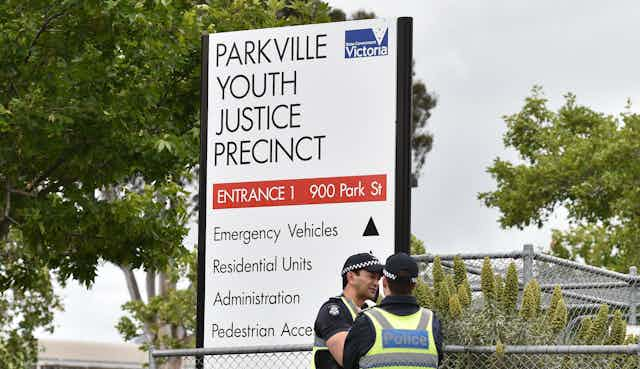Most young people in the youth justice system have been found to come from “troubled” backgrounds. However, many people with similar backgrounds don’t ever end up in youth justice services.
Knowing why people with troubled childhoods may be more likely to engage in criminal activity is necessary to inform the development of effective prevention and early intervention initiatives.
What is ‘a bad childhood’?
The concept of a “bad childhood” is used a lot.
Conventional wisdom is that it is used to inform sentencing, with some believing it’s used as an excuse for lenience. Others are more sympathetic to the plight of the disadvantaged, arguing that those in prison are essentially hapless victims of circumstance.
But just what constitutes a bad childhood? The 2015-16 Victorian Youth Parole Board annual report provides some possible insights. Using data from a snapshot survey of 176 young people in custody, it revealed:
45% had been previously subject to a child protection order;
63% had experienced child abuse and/or neglect;
30% had a current mental health issue;
90% had offended while under the influence of alcohol and/or other drugs;
38% had a parent or sibling who had been imprisoned; and
62% had been suspended or expelled from school.
These statistics are most startling at the pointy end of the youth justice system. Research has revealed that while one in ten people on a youth supervision order have had contact with child protection services, the figure increases to one in two for those who have received a custodial sentence.
A similar pattern is apparent for children in contact with child protection services. Children currently in – or who have histories with – residential care services are more likely to have contact with the justice system than children who are not subject to residential care.
A particular challenge is that when young people report the kind of experiences listed above, they are more likely to become disengaged from meaningful daily activities and increasingly disconnected from family. Drug use becomes more available and appealing. Research demonstrates these are strong markers for criminal activity.
Learning resilience
Resilience is a process of adaptation. As we are exposed to risks, threats or trauma, we can learn to adapt to it – provided we have have adequate supports in place, such as safe and secure housing and feeling stable in other aspects of our lives.
One of the most significant predictors of a person’s resilience is the number of positive adult role models they have in their life. While every young person benefits from these kind of relationships, disadvantaged and/or disaffected young people have been found to benefit much more.
Importantly here, resilience is a learned trait that can be fostered. Studies have shown that children can be very resilient, even in the most adverse situations. However, resilience is constrained by the environment in which they are in. Michael Ungar refers to this as the “social ecology of resilience”, where context can affect the positive outcomes of adversity.
It is typical for a young person to face a degree of hardship during childhood or adolescence. Provided this is supported, and in the context of an otherwise “healthy” life, the young person will probably be fine. Research indicates that exposure to some adversity helps to build resilience.
However, if we are exposed to a traumatic event but don’t have safety, security and support, we may suffer significant negative impacts – such as psychological impairment – rather than simply bouncing back.
What we now know
Historically, we have been focused on identifying risk factors for criminality. The logical premise of doing so has been that being able to identify these provides the necessary information to target prevention and early intervention initiatives.
But the subsequent assumption was that removing the young person from the risk factor was necessary for a positive outcome. The dilemma is that many of the risk factors are fixed or “static”, and therefore not necessarily amenable to change.
For instance, being raised in residential care is a risk factor for criminality. But we cannot suddenly undo this, or provide a loving a supportive family environment in which the young person can thrive. Protective factors – or a lack thereof – potentially shed more light on who might be most vulnerable to a range of negative health and justice-related outcomes.
Some interventions are now premised on the belief that increasing protective factors does much to ameliorate the impacts of this risk, and decrease the appeal of drug use or crime.
Significantly, the social environment an individual is in, both prior to and following an adverse life event, appears to be more influential in the development of resilience than the specific event itself.
The demographies of young people in prison aren’t stories of a single childhood adversity. Intergenerational crime and poverty, parental substance abuse, mental health issues, early school disengagement, family breakdown, child abuse, domestic violence and experiences of homelessness are all typical and indicative of these young people’s stories.
No single event leads to crime. Rather, many traumas and their accumulated effects, compounded by a lack of protective factors, contribute to why some people are “less resilient”, and also more susceptible to commit crime.

